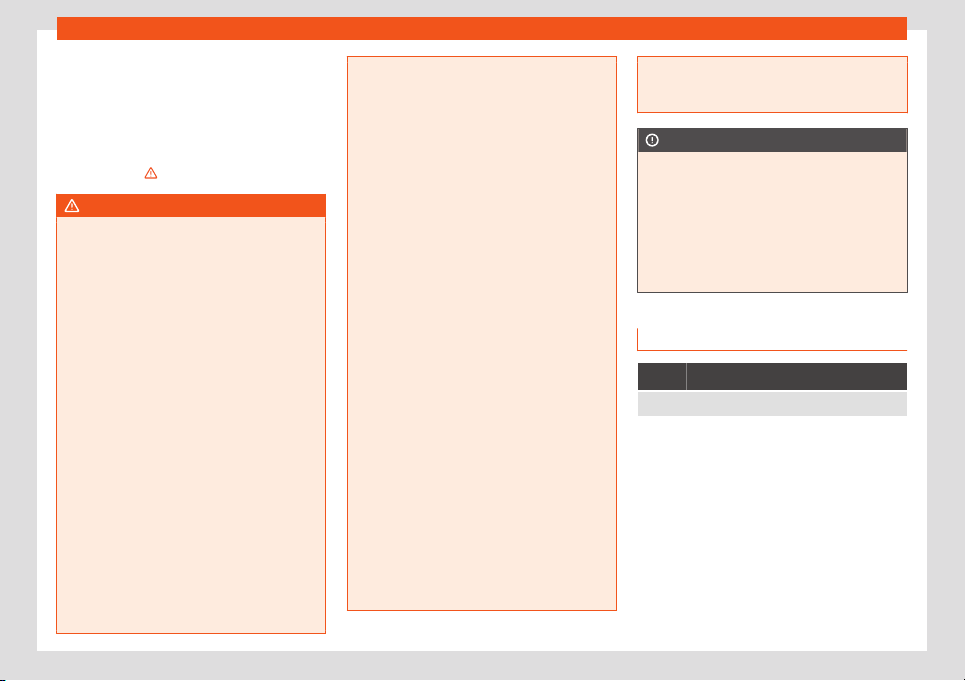Loading ...
Loading ...
Loading ...

Practical tips
soon as the ignition is switched on and the
engine st
art
ed.
Wint
er conditions
During the wint
er
, the starting power may be
reduced, and if necessary, the battery should
be charged
›››
WARNING
Always be aware of the danger of injury
and chemical burns as well as the risk of
accident or fire when working on the bat-
t
ery and the electrical system:
●
Wear eye protection. Protect your eyes,
skin and clothing from acid and particles
containing lead.
●
Battery acid is extremely corrosive. Wear
protective gloves and eye protection. Do
not tilt the batteries. This could spill acid
through the vents.
●
Neutralise any electrolyte splashes on
the skin, eyes or clothing with a soapy solu-
tion, and rinse off with plenty of water. If
acid is swallowed by mistake, consult a
doctor immediately.
●
Fires, sparks, open flames and smoking
are prohibited. When handling cables and
electrical equipment, avoid causing sparks
and electrostatic charge. Never short the
battery terminals. High-energy sparks can
cause injury.
●
A highly explosive mixture of gases is re-
leased when the battery is under charge.
The batteries should be charged in a well-
ventilated room only.
●
K
eep children away from acid and bat-
teries.
●
Before working on the electrical system,
you must switch off the engine, the ignition
and all electrical devices. The negative ca-
ble on the battery must be disconnected.
When a light bulb is changed, you need on-
ly switch off the light.
●
Deactivate the anti-theft alarm by un-
locking the vehicle before you disconnect
the battery! The alarm will otherwise be
triggered.
●
When disconnecting the battery from the
vehicle on-board network, disconnect first
the negative cable and then the positive
cable.
●
Switch off all electrical devices before
reconnecting the battery. Reconnect first
the positive cable and then the negative
cable. Never reverse the polarity of the
connections. This could cause an electrical
fire.
●
Never charge a frozen battery, or one
which has thawed. This could result in ex-
plosions and chemical burns. Always re-
place a battery which has frozen. A flat
battery can also freeze at temperatures
close to 0°C (+32°F).
●
Ensure that the vent hose is always con-
nected to the battery.
●
Never use a defective batt
ery. This could
cause an explosion. Replace a damaged
battery immediately.
CAUTION
●
Do not e
xpose the battery to direct sun-
light o
ver a long period of time, as the in-
tense ultraviolet radiation can damage the
battery housing.
●
If the vehicle is left standing in cold con-
ditions for a long period, protect the bat-
tery from “freezing”. If it freezes it will be
damaged.
Warning lamp
It lights up
Alternator fault.
The control lamp lights up when the ignition is
s
wit
ched on. It shoul
d go out when the engine
has st
art
ed running.
If the control lamp lights up while driving,
the alternator is no longer charging the bat-
tery. You should immediately drive to the
nearest specialised workshop.
You should avoid using electrical equipment
that is not absolutely necessary because this
will drain the battery.
342
Loading ...
Loading ...
Loading ...